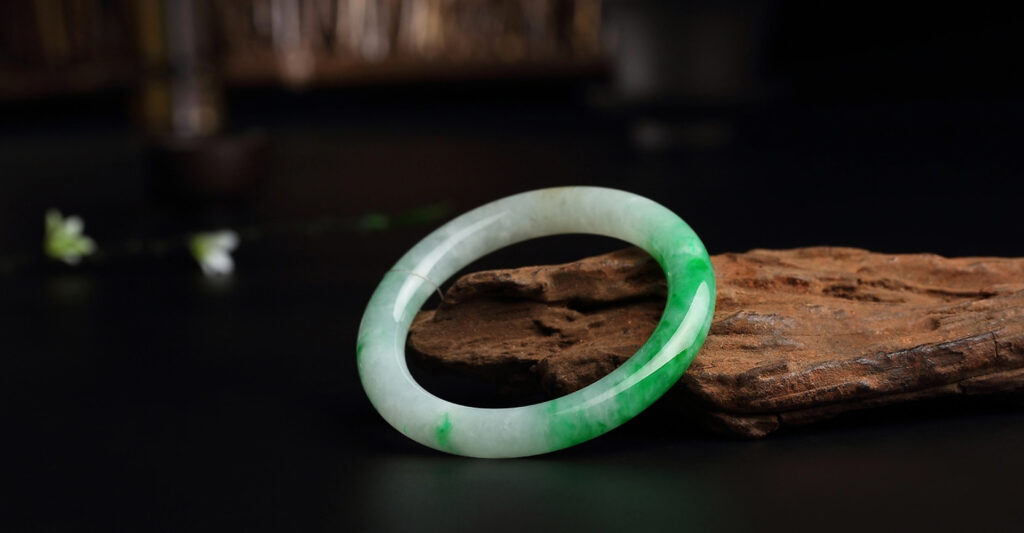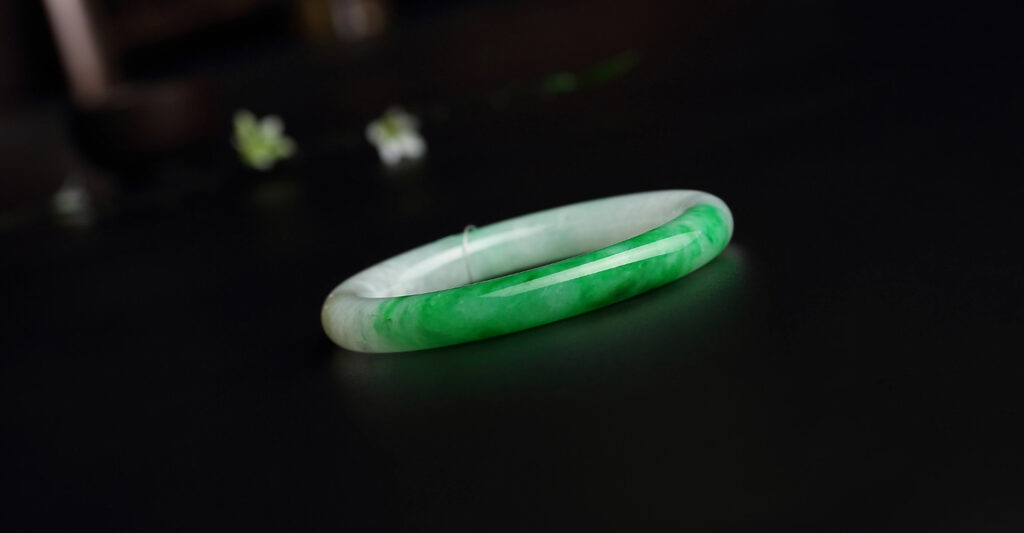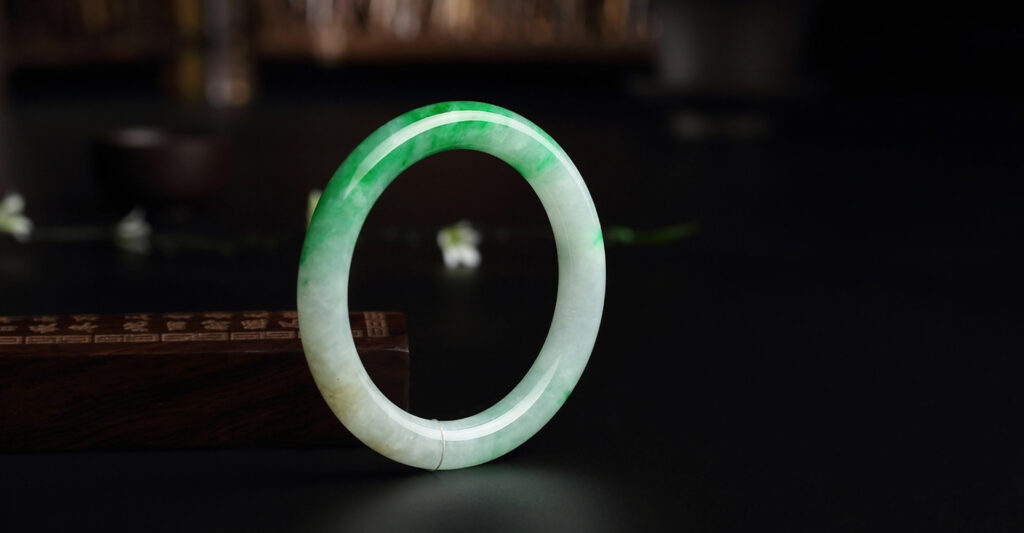As the king of jade, jadeite captivates people with its smooth texture, vibrant colors, and profound cultural heritage. However, the market is flooded with counterfeit jadeite, deterring many consumers—especially newcomers. In reality, mastering a few simple and practical identification methods can effectively prevent purchasing fakes. Below, we introduce the simplest and most effective methods for distinguishing genuine from fake jadeite, covering four key aspects: appearance, texture, sound, and professional tools.

I. Appearance: The “Natural Markings” of Genuine Jadeite
1. Observe Color Distribution
Natural jadeite typically exhibits uneven color distribution with naturally transitioning color roots (areas where color gradually shifts from deep to light). For instance, the color roots of green jadeite may spread outward like tree roots, displaying varying shades. Dyed jadeite (C-grade), however, often features overly vivid, uniform colors lacking depth. These colors appear to float on the surface, sometimes accumulating in cracks.
2. Look for Internal Structural Features
Natural jadeite possesses a distinctive “jadeite texture”—flaky, needle-like, or fibrous flashes visible to the naked eye or under a magnifier (commonly called “fly wings”). This reflects the cleavage planes of the jadeite mineral and is one of its key identifying characteristics. Additionally, natural jadeite often contains internal inclusions like cotton-like inclusions, stone veins, or impurities. Synthetic or treated jadeite, however, typically appears excessively clean or exhibits abnormally regular internal structures.
3. Inspect Surface Luster
Natural jadeite exhibits a glassy to oily luster, with a smooth, fine surface and soft reflections. Acid-washed and resin-filled B-grade jadeite, however, shows weakened luster due to surface corrosion, appearing waxy or resinous, and may even display uneven acid-etched mesh patterns.
II. Touch and Feel: The “Cool Touch” of Natural Jadeite
1. Sense Temperature Change
Natural jadeite has excellent thermal conductivity. When worn close to the skin or touched by hand, it quickly absorbs body heat, feeling cool and maintaining that sensation for an extended period. Imitations like glass or plastic have poor thermal conductivity, warming up rapidly upon contact and providing only a brief cooling sensation.
2. Test Weight
Jadeite’s density (3.30–3.36 g/cm³) exceeds most imitations. For identical volumes, natural jadeite feels heavier with a distinct “heavy-handed” sensation. For instance, comparing jadeite to similarly sized glass or plastic items reveals its noticeable weight advantage.

III. Sound Test: Natural Jadeite’s “Crisp Resonance”
1. Lightly Tap to Listen
Suspend the jadeite with a fine string and gently tap it with a hard object (use moderate force to avoid damage). Natural jadeite produces a clear, resonant “steel-like” sound, similar to metal clinking. B-grade jadeite, with its internal structure compromised, emits a dull, short sound; glass imitations produce a muffled “thud.”
2. Comparing Multiple Pieces
If multiple jadeite pieces are available, tap them against each other for sound comparison. Natural jadeite exhibits consistent tones, while treated jadeite shows noticeable variations in sound.
IV. Utilizing Tools: Enhancing Accuracy with Simple Equipment
1. Magnifying Glass Inspection
Examine the jadeite surface with a 10x magnifying glass:
Natural jadeite: Exhibits an orange peel effect (irregular surface texture caused by variations in jadeite mineral hardness).
B-grade jadeite: Displays acid-etched mesh patterns, appearing as spiderweb-like or channel-like fissures.
Dyed jadeite: Shows color deposits along fissures, forming “color veins.”
2. UV Light Inspection
Expose jadeite to UV light in a darkened area:
Natural jadeite: Typically exhibits no fluorescence (some older-mine varieties may show faint fluorescence).
B-type jadeite: Emits blue-white fluorescence due to organic compounds in the resin injection.
Dyed jadeite: Dyes may fluoresce, displaying colors distinct from natural jadeite.
3. Charles Filter
Dyed jadeite (e.g., green-dyed) appears red or pink under a Charles filter, while natural jadeite remains unchanged. However, this method is only effective for certain dyed jadeites and should be combined with other techniques for comprehensive evaluation.

V. Precautions: Avoiding Common Pitfalls
Avoid judging authenticity solely by price: Low prices don’t necessarily mean counterfeit, and high prices may conceal issues. Quality must be evaluated holistically.
Approach “certificates” with caution: Request appraisal certificates from authoritative institutions (e.g., CMA, CNAS certified) and verify that the certificate number matches the physical item.
Learn and observe extensively: Jadeite identification requires accumulated experience. Beginners are advised to start with entry-level pieces to gradually enhance their discernment skills.
Conclusion: Consume Rationally, Appreciate Jadeite’s Beauty
Mastering these simple methods can significantly reduce the risk of purchasing counterfeit jadeite, even without professional equipment. However, note that jadeite appraisal is a complex field requiring multiple approaches or professional testing for intricate cases. Most importantly, maintain a rational mindset, avoid chasing bargains, and choose reputable sellers. May every jadeite enthusiast discover their own piece of serene beauty!